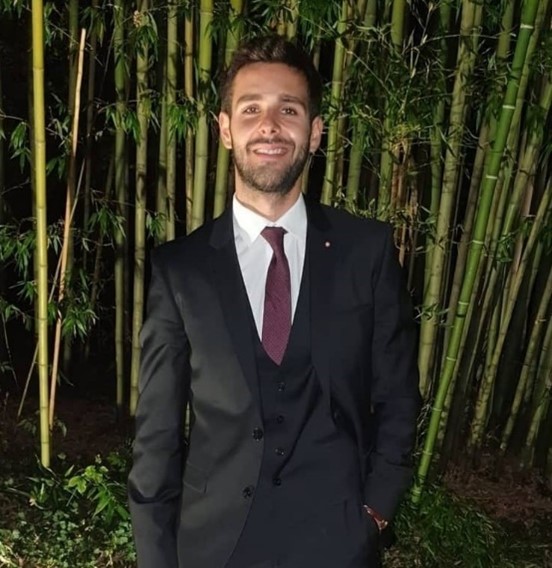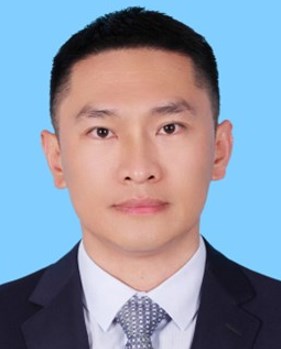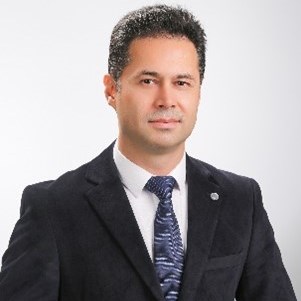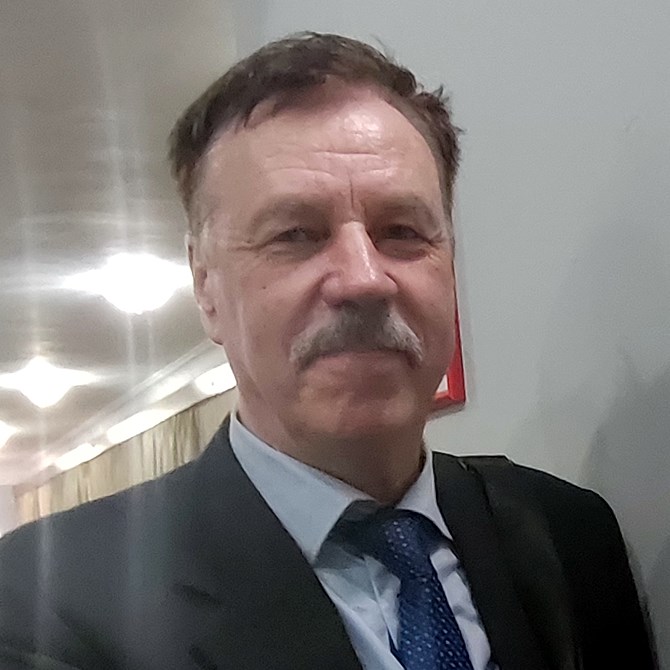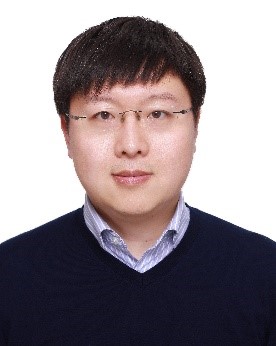Invited Speakers
Dr. Liyang Xie
Professor, Northeastern University, ChinaSpeech Title: On Fatigue Damage Definition and Failure Probability Prediction in Probabilistic Framework
Abstract: Fatigue damage is usually defined as ∑ni / Ni , i.e., the sum of the ratios of stress cycle number to fatigue life under different stress levels. When fatigue life needs to be treated as a random variable, such definition will result in complex cumulative damage calculation. Besides, different definition on fatigue damage implies different critical damage for fatigue failure criterion. This paper defines and discusses different fatigue damage definitions and corresponding issues about failure probability prediction under variable amplitude stress histories. It shows that in the situation of fatigue life following the three-parameter Weibull distribution, the fatigue damage defined based on the location parameter, i.e., the threshold of the random life, is appropriate for cumulative fatigue damage calculation and probabilistic fatigue life prediction.
Keywords: Fatigue damage, critical damage, fatigue life, Weibull distribution, failure probability.
Dr. Qiang Zhu
Professor, Department of Mechanical and Energy Engineering,Southern University of Science and Technology, China
Speech Title: Application of High-throughput Compression Creep Testing Method in Rapid Evaluation of Creep Behavior of Superalloys
Abstract: As one of the principals supporting platforms and key technologies of the "Materials Genome Initiative", high-throughput experimental technology has drastically transformed the landscape of material development by substantially reducing both the development time and associated costs. One area where this impact is particularly evident is in the development of materials for aeroengines and gas turbine blades, where creep testing is a vital component of the development process. Traditionally, tensile creep testing methods have been utilised, but these are both time-consuming and expensive. In response to this challenge, this study introduces a novel approach of a rapid compression creep technique. This innovative method facilitates simultaneous testing of eight samples, thus significantly reducing the time and cost compared to traditional methods. Crucially, this study has successfully utilized the compression creep data to establish a quantitative correlation with tensile creep data, leading to accurate predictions of stress rupture life. Furthermore, this new testing method can also be employed for the rapid screening of creep properties during the development of new materials, allowing for a swift determination of creep stress exponents. This technique also offers the capability to screen the chemical composition of engineering materials. Thus, the rapid compression creep technique represents a significant advance in the field, offering a new method for the rapid evaluation of high-temperature performance in superalloys.
Keywords: High-throughput experimental technology, compressive and tensile creep, evaluation of creep behavior.
Dr. Soon-Gil Yoon
Professor, Department of Materials Science and Engineering,Chungnam National University, Republic of Korea
Speech Title: Mechanical Strength of SZO-PTFE and ZnO-PTFE Films for High-Sensitivity Touch Sensor Applications
Abstract: Flexible and transparent antimicrobial touch/tactile sensors have received considerable attention on account of their wider applicability in personal electronic devices. For electronic devices, coated films should have an enough mechanical strength because of many touches in the case of smart phone applications. Herein, SZO-PTFE and ZnO-PTFE composite thin films with sensorial capabilities and high mechanical strengths are developed via a co-sputtering technique. Mechanical strengths of the composite films were investigated via micro-indenter. Their mechanical strengths showed similar results to that of the glass substrate. Elastic modulus and hardness of the ZnO-PTFE composite films showed almost 90 GPa (that of glass: 70 GPa) and 5.5 GPa (that of glass: 6.1 GPa), respectively. They showed a good adhesion between composite films and glass substrate via adhesive tape test. Furthermore, the linear response of the TENG to driven pressure indicates its excellent pressure-sensing ability, with an unprecedented sensitivity of 75.31 V/kPa and a touch sensitivity of 31.36 V/kPa. Further, the real-time application of ZnO-PTFE as display coating and self-powered touch sensor is demonstrated. This work demonstrates a simple route towards the design of smart coatings with high mechanical strengths.
Dr. Raffaele Cucuzza
Department of Structural, Geotechnical and Building Engineering, Politecnico di Torino, ItalySpeech Title: An Alternative Approach for Reversing the Structural Design Process: from the Traditional Minimum-weight Approach to the Cutting Losses Minimization
Abstract: Since the beginning of the structural optimization field, the optimal design was characterized by the least-weight configuration. In this sense, all the researchers agreed on adopting the minimum-weight optimization statement as the most promising approach to achieve an optimized employment of material. However, especially for steel structures, this approach completely fails the primary goal of encouraging standardization of pieces during the production phase and reducing constructability issues at the assembly and erection phase. Except for rare cases, increasing diversity among structural elements (i.e. different lengths, different cross-sections and/or materials) leads to a dramatic increase in the financial cost as well as the environmental impact of the structure because of the material waste generated during the cutting procedure.
In this research, a Genetic Algorithm (GA) has been developed and the well-known one-dimensional bin packing problem (BPP) has been implemented within the structural optimization process. The Objective Function formulation lies in a marked change of the paradigm in which the target function is represented by the amount of steel required by the factory instead of the structural cost (e.g. weight). The proposed approach is tested on different steel structures with an increasing number of pieces moving from 2D truss beams to 3D domes. The best design is obtained by varying the size and the overall layout ensuring optimal stock of existing elements.
Finally, comparisons between the traditional minimum-weight approach and the proposed one have been provided for each case study, and economic and environmental benefits deriving from the latter have been discussed.
Dr. Gusztáv Fekete
Senior Researcher, Department of Material Science and Technology,Széchenyi István University, Hungary
Speech Title: Numerical Investigation of Knee Prosthesis Wear as A Function of Prosthesis Size
Abstract: Wear is a key factor that significantly limits the survival of total knee arthroplasties (TKAs). While it is known that this phenomenon is influenced by the applied load and the kinematic conditions between the prosthesis parts, it is unknown how the geometry of the TKA react on wear. This article has investigated, by means of multibody models, how different TKA sizes and TKA-related geometric parameters affect wear during gait motion. It has been demonstrated that wear rate increases, closely linearly, as a function of TKAs size, while the influence of TKA-related geometric parameters on wear propagation can be described by either linear or quadratic functions. These results, together with the newly introduced dimensionless parameters, demonstrate that the wear rate of TKAs can be reduced by choosing the right dimensions.
Dr. Liyuan Sheng
Professor, Vice-Dean, Shenzhen Institute, Peking University, ChinaSpeech Title: Optimizing Microstructure and Mechanical Properties of the Hot Forged Ti-6Al-4V Alloy via Laser Shock Peening
Abstract: The hot forged Ti-6Al-4V alloy demonstrates well constructured microstructure and balanced mechanical properties, which promotes its widely application in aviation field. However, its relative poor resistance to wear and foreign object impact usually leads to the cumulative damage, causing sudden failure and serious accident. Though the conventional coating technology could improve the surface damage resistance, the interface always becomes the origin of failure. Comparatively, Laser shock peening (LSP) has attracted significant interest, due to its controlled processing accuracy and great surface plastic deformation capability, which could form gradient grain structure with the gradient strengthening effect. Nevertheless, the specific mechanism of microstructure evolution and mechanical properties enhancement of LSP processed hot forged Ti-6Al-4V alloy is still obscure. In present research, the hot forged Ti-6Al-4V alloy was processed by LSP to regulate its superficial microstructure and improve mechanical properties, helping to understand the inner mechansim. The results reveal that LSP could simultaneously result in the merging of ultra-fine α-Ti grains and refinement of coarse α-Ti grains, which reconstruct the dual-size grain structure. The crystal tilting and transformation promoted by the generation and movement of dislocations benefit the merging of ultra-fine grains. Due to the different slip systems in dual phases, β-Ti phases exhibit much greater response to slip under surface plastic deformation, which are enforced to deform and construct the shell structure by sliding and phase transformation, while the α-Ti phases act as the core to synergistically construct ‘core-shell’ like structure. The increase of LSP number promotes the well wrapping of the ‘core-shell’ like structure and strengthens it by abundant dislocations, which also forms the gradient grain structure from surface to inner. Since the microstructure regulation and crystal defects engineering, the LSP improves the surface damage resistance and mechanical properties of the hot forged Ti-6Al-4V alloy obviously, which indicates a new method to increase properties of the hot forged Ti-6Al-4V alloy component further.
Keywords: Ti-6Al-4V alloy, laser shock peening, microstructure, core-shell structure, wear properties, tensile properties.
Acknowledgements: This work was supported by the Shenzhen Basic Research Project (JCYJ20210324120001003 and JCYJ20200109144608205).
Dr. Yuan Chen
Shenzhen Key Laboratory of Intelligent Manufacturing for Continuous Carbon Fibre Reinforced Composites,Southern University of Science and Technology, China
Speech Title: Three-dimensional Meta-composite of High Thermal-dimensional-stability
Abstract: High thermal-dimensional stability is crucial for high-precision applications, e.g., unmanned monitoring of Moon surface environment, etc. This study designs a novel 3D carbon fibre reinforced plastic (CFRP) meta-composite with high thermal-dimensional stability. First, the planar CFRP meta-composite was designed with a continuous carbon fibre reinforced polyamide (PA) central cross-lattice interlocked with four short carbon fibre reinforced PA outer-strips, fabricated via fused filament fabrication. The results show that the CFRP meta-composite can achieve an effective CTE of 4.6×10−6/℃ from the direct experimental measurements and of 4.9×10−6/℃ from the numerical simulation. Then, a novel three-dimensional (3D) meta-composite was developed and calculated, exhibiting a negative effective CTE at −0.18×10−6/℃, based on the planar composite meta-composite. After lightweight optimisation under the constraint of CTE to zero for the 3D meta-composite, the optimal 3D CFRP meta-composite can possess an effective density of 0.0266 g/cm3 and an effective CTE of 0.0173×10−6/℃, which are 15.3% and 90.39% enhanced, respectively, as compared to those of the initial one, demonstrating its high thermal-dimensional-stability.
Keywords: Continuous carbon fibre, finite element analysis, coefficient of thermal expansion, FFF, thermal-dimensional stability.
Dr. Kadir GÖK
Professor, Biomedical Engineering, İzmir Bakırcay University, TurkeySpeech Title: Investigation of Implants and Prostheses through Biomechanics and Computer-Aided Numerical Solutions
Abstract: The analysis of implants and prostheses through biomechanics and computer-aided numerical solutions is a crucial aspect of orthopedic research and development. This study focuses on utilizing biomechanical principles and advanced numerical modeling techniques to evaluate the performance, stability, and longevity of implants and prostheses. By employing sophisticated computational simulations, various scenarios and loading conditions can be simulated to assess the structural integrity and functional behavior of these medical devices. The integration of biomechanics and computational methods provides valuable insights for optimizing the design, materials, and surgical techniques associated with implants and prostheses. Ultimately, this interdisciplinary approach aims to enhance the efficacy, durability, and patient outcomes of orthopedic interventions.
Dr. Alexander Khotsianovsky
Senior Researcher, Pisarenko Institute of Problems of Strength,National Academy of Sciences of Ukraine (PIPS NASU), Kyiv, Ukraine
Speech Title: Evolution of the ΔKeff Concept for Long and Short Fatigue/Fretting Fatigue Cracks and Marci Effect Substantiation
Abstract: Durability of critical aerospace parts and heavy-duty equipment can be drastically reduced by contact stresses and fretting, promoting initiation of short cracks and their rapid propagation even in compressive residual stress fields. A combination of contact and bulk loads may generate very high stress intensity factors (SIFs) at the crack tip, which minimal and maximal values and their stress ratio R may vary with each loading cycle. Thus, prediction of fatigue crack growth rate (FCGR) under varied R is quite complicated. The issue of fitting experimental FCGR curves obtained for various R into a single ΔKeff-da/dN diagram has been repeatedly revisited after Elber’s crack closure concept emergence in 1972, its successful realization by Marci in the 1990s, and modification by Kuyawsky in 2010s. This report surveys modern approaches, in particular, the original methodology developed by the author at PIPS NASU based on DLR test equipment and methodology, in which Kmax was kept constant, and Kmin varied, yielding numerous R values and corresponding FCGR diagrams via a single specimen. FCGR was found to depend on the interaction of the cyclic stress field controlled by R with the static stress field proportional to Kmax. The original method of fitting various FCGR curves into a unified ΔKeff-da/dN diagram using spline functions has been proposed by the speaker and jointly published with Dr. Marci (DLR). Recently, the author applied this approach to predict fatigue and fretting fatigue crack rates in specimens from various steels, Ti, and Al alloys, including those with induced residual stress fields. A good fit of calculated and experimental results made it possible to extend this approach for predicting the durability of actual elements of aerospace equipment. The relevance of this research direction was proved by recent confirmation of the so-called "Marci effect", which implied catastrophic failure of several Ti and Al superalloys, including IMI 834, which occurred due to anomalously high FCGR at near-zero ΔK and high Kmax values, with no SIF threshold detected. Besides relating this effect to the joint action of generated voids and low-temperature creep in the crack tip, its mechanism is considered in the modified ΔKeff-da/dN diagram for short cracks proposed by the speaker and co-authors at PIPS NASU in 2024.
Keywords: Effective stress intensity factor, fatigue crack growth rate, fretting fatigue, stress ratio, Elber concept, crack closure, spline function, Marci effect, short crack.
Dr. Kunkun Fu
Professor, School of Aerospace Engineering and Applied Mechanics, Tongji University, ChinaSpeech Title: Failure Analysis of Carbon Fiber Reinforced Composites after Lightning Strike
Abstract: Carbon fiber reinforced composites (CFRCs) have been increasingly utilized in aircraft to replace metal alloys due to their low density and excellent specific strength and stiffness. However, the use of semi-conductive CFRC structure in an aircraft presents a threat to flight safety from lightning strikes. Compared to metallic counterparts, CFRCs exhibit much lower electrical conductivity, which may not readily conduct away a high lightning current. As a result, the injection of lightning current causes intense resistive heating in the CFRCs, leading to severe thermal ablation and delamination. This study developed a coupled electrical-thermal-mechanical finite element (FE) model to accurately predict the thermal and mechanical damage to CFRCs during a lightning strike event. The dynamic response and damage evolution in CFRCs were predicted by the FE model and compared with experimental results from simulated lightning strike tests. It was found that the FE-predicted results regarding lightning strike damage/depth and dynamic responses were consistent with existing experimental data, demonstrating the effectiveness of the proposed FE model. Subsequently, a multi-objective optimization method was established to optimize the geometric and electrical parameters of a dual-layer lightning strike protection system for both high protection effectiveness and lightweight. Finally, two lightweight protective strategies were proposed for excellent lightning strike protection as well as electromagnetic interference shielding.
Keywords: Carbon fiber reinforced composite, lightning strike, damage, protection.
Acknowledgements: The authors acknowledge financial support from the National Natural Science Foundation of China (Grant number: 12172257).





